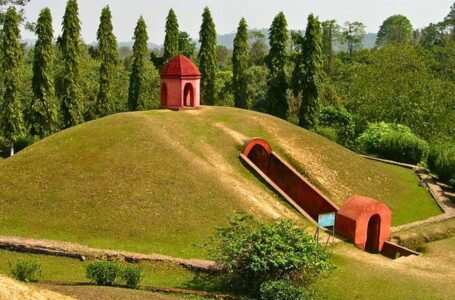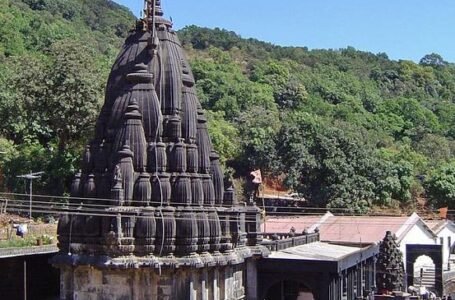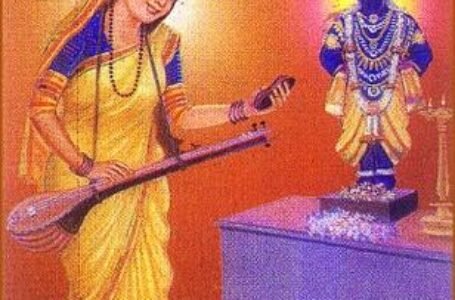Muga silk: The Golden Silk of Assam
- Lifestyle Ancient history Asian history
 Shweta Toppo
Shweta Toppo- January 9, 2023
- 0
- 752

Assam is famed for its tea gardens, cultural history, and wild silk manufacturing. The word “Muga” is derived from the Assamese language because of this wealthy amber colour, representing the colour of the cocoon of the silkworm. Muga silk is also called golden silk from Assam. The word Muga approaches yellowish in Assamese. These sarees are in demand for their natural sheen and gorgeousness. It also symbolizes the Assamese wealthy subculture and the conventional attire of their place; it’s also the satisfaction of Assam. Silk is likewise acknowledged for its glossiness. Pleasant texture and durability.
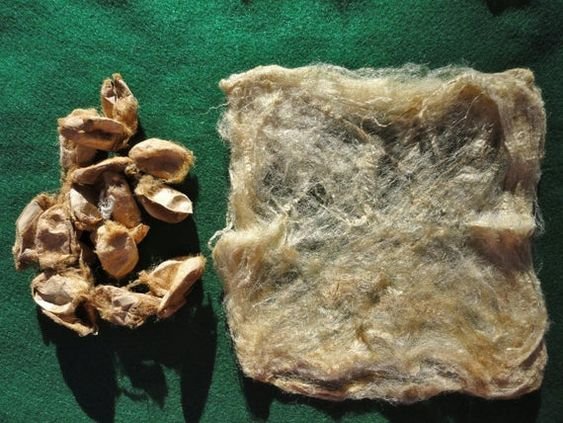
It’s believed that in the time of the Ahom dynasty (1228 to 1828), Muga silk became woven inside the nation and stored reserved for royal human beings and high-rating officials. The royal looms were weaved with the aid of the women and within the palace for the royal circle of relatives known as Rajaghoria looms. Those weavers had been part educated by the queens for the art. It’s also said that each female and man in the location was taught to spin and hand weave. It is also considered that if a girl can not perform a loom it is undeserving of marriage.

In the 11th century, the Pala dynasty dominated Western Assam from 900 to 1100 ad by the king Dharam pala. The King had bought 26 weavers households from tantikunchi to sualkuchi and created a weaver’s village. At some point in that period, sualkuchi has come to be a well-known silk fabric. Sualkuchi is a multi-forged district of kamrup of Assam, situated at the bank of Brahmaputra. Assam was called for golden fibre manufacturing. In the 17th century, sualkuchi became the prime centre for the silk handloom and numerous other cottage industries.
All through the period of the second global struggle, there has been a growing call for material and a boom in rate which turned into liked by way of Tanti families to introduce themselves as industrial weavers. And they started hiring wage weavers who have been local poors from sualkuchi and bhatipara. Many migrant wage weavers emerged and presently are the town’s dominating weavers. In 2001 as in step with the census file Sualkuchi and the people of the village are engaged in the occupation of giving handloom Assamese traditional silk wear.

Muga silk cultivation specifically takes area inside the west Garo hills and Khasi hills in Assam from the silkworms Antheraea assamensis additionally referred to as som and soalu. Rearing methods were upgraded into new advanced machines implemented with the aid of medical technology for the manufacturing of silkworms and yarning. With a thousand cocoons yarning one hundred 25 grams of Muga. As 1000 grams of Muga is vital to view a saree, the procedure takes 2 months to finish the weaving. The natural colour of the Muga silk is rich golden yellow or mild brown. Fly shutter is used for weaving and for designing dobby and jacquard. Fly shuttle is a method wherein the wood shuttle travel is handed from one end to some other cease to the weave sitting on each facet in a parallel way, the weaver uses the paddle to shoot the shuttle. There are three major types of wild silk; golden silk, white pat and warm Eri silk. White pat is manufactured with the aid of bombyx textor, which is of white or off-white in colouration. Made with mulberry silkworms.

However, Eri silk is produced by way of Samia Cynthia silkworms which are fed on the leaves of castor oil plants, these are soft and heat silk regarded for manufacturing scarf and quilts.
The Mekhla aka long drape skirt and chadra aka stole are made with the Muga silk yarn. Assamese women wore those attire all through the yearly festival of Bihu or in marriages, motifs like plants, leaves, trees, and the Bihu motifs are imprinted in the skirt or stole. The sustainability of silkworms relies upon climate situations which require the temperature to be in the range of 25°c to 27°c and the humidity inside the range of 75% to 85% any bad impact on the weather situation can affect the lifestyles cycle of the silkworms. The livelihood of the people depends on silkworm rearing to live to tell the tale.

Renu is weaving silk for extra than 60 years now she is 85 years antique and had tremendous knowledge approximately all types of silk. Sampa Das has been operating and innovating with Muga silk for more than 4 decades, she is considered the manchester of Assam and known as the golden Muga revivalist. Her designed sarees and mekehal are worn by using many Bollywood personalities; Hemamalini and her daughter Esha Deol, Deepika Padukon, Kiran Kher, Tabbu and plenty of greater in Lakme fashion weeks. Proudly owning a mekehla chadar is called satisfaction for Assames women, it’s far as identical to owning a gold ornament.
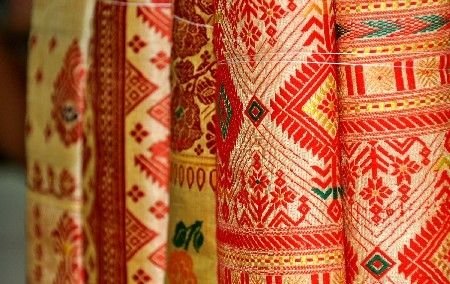
There are some blessings to owning an authentic product; The Muga silk cloth has a totally soft and clean texture. The whole fabric is natural, it includes 97% protein three% fat and wax and 18% amino acid that are beneficial for human pores and skin as delays growing old, and trap moisture for dry skin and flaky pores and skin. It is dust, fungal and pollutant resistant. Though there are a few dangers , like it’s far very much steeply-priced because of higher call for, it may be worn on some most effective unique events, Excessive maintenance.

Presently, there is lots of product innovation from Muga silk as an ability uncooked material for plane tyres, bulletproof jackets and parachute ropes. The worldwide demand for Muga silk has a fast boom inside the market, specifically in Japan wherein designs are utilised in making kimonos and different conventional Japanese dresses. In 2006 Muga silk become promoted with a geographical indicators tag and additionally has become one of the most expensive silks within the globe. In the current situation, the fee for Muga yarn is 21,000/- rupee in line with the kilo in contrast to 19 century, which was 800/- rupees per kilo. However, the price of mekehla chadar begins from 3,500 and goes up to 1,50,000/- rupee.
